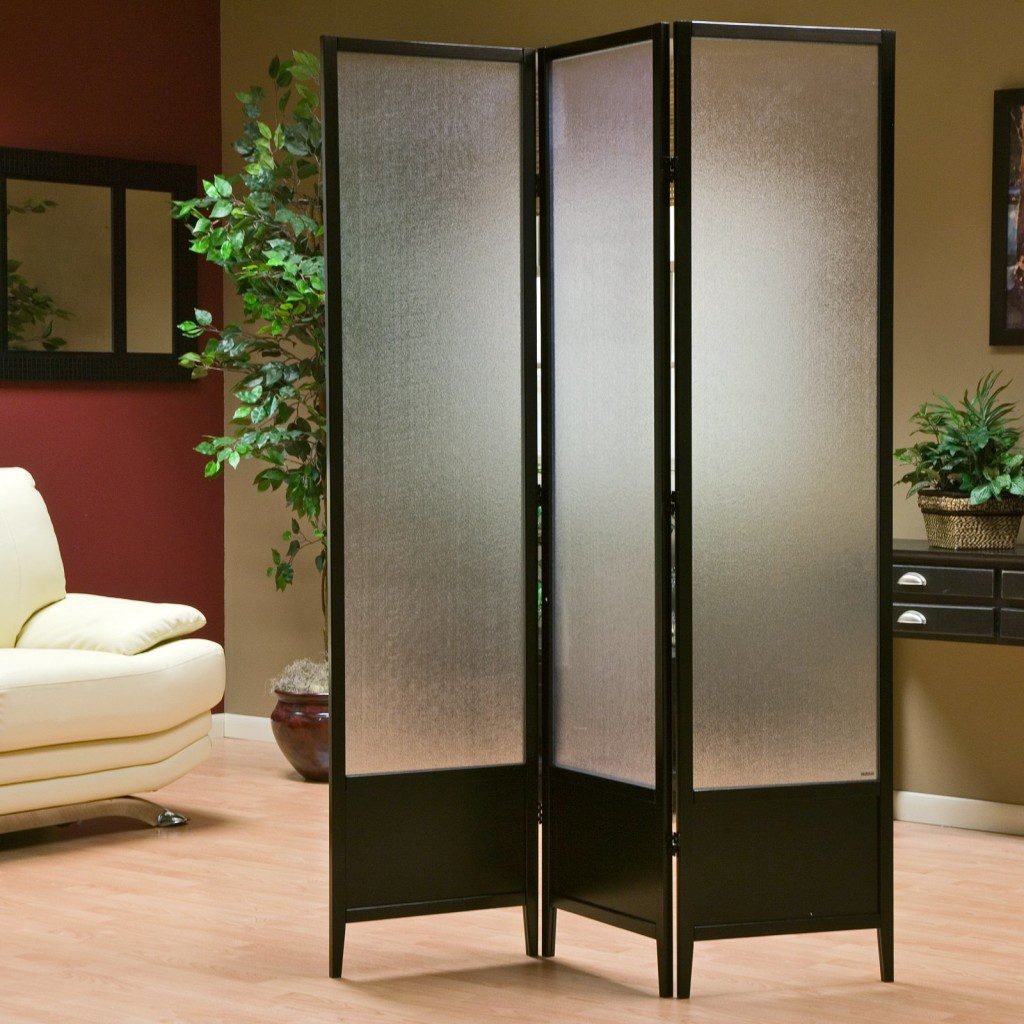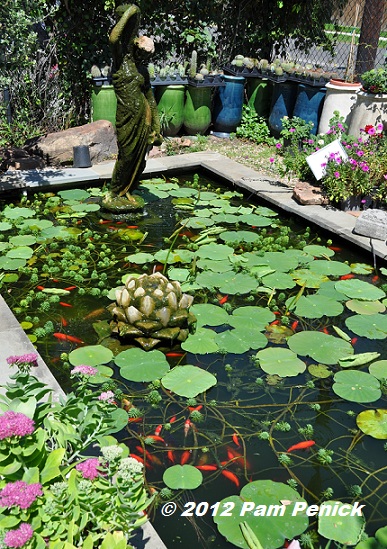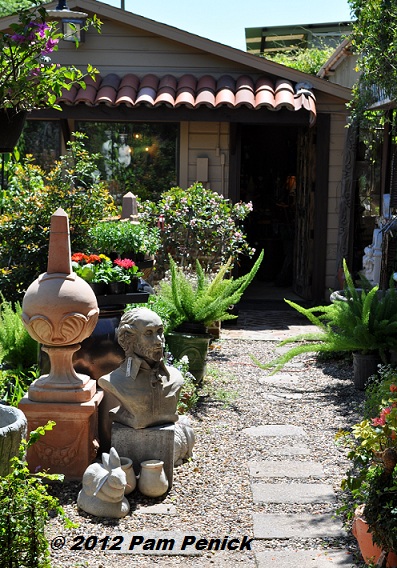Living Plants
Living plants can be a delightful way to divide a room. It should be bushy and high enough for an effective dividing.
Exotic plants that are best suited:
“Fichus Tree”; “Palm Tree”; “Oleander”; etc.
Of course, many other plants are suitable. The
condition is to have branches and leaves as much as possible.
These living plants have a great decorative effect and they are also very effective for our purpose.

Plexiglass Panels
Plexiglass (Extruded Acrylic) sheets is a transparent plastic used as a substitute for glass.
You can find plexiglass, which is coming in different sizes and colors, at your hardware store.
Using plexiglass sheets as room dividers is a smart idea. They are beautiful, ornamental that allow light to pass through them



These planters have a very original and interesting look. It’s because they are made from recycled wine bottles. It’s a great DIY project that can be easily replicated. We all like to have an occasional glass of wine. This means that the bottles will need a new purpose. So why not turn them into something useful and also creative, something that you can use as a decoration for your home? Let’s take a closer look at these planters.

The planters are made from actual wine bottles. The most difficult part will be to but off the bottom part of the bottles. This way your plants will be able to beautifully grow inside the bottle and then expand outside its limits. However, since they will be hanging upside down, using normal soil becomes impossible. Perhaps moss would be a better choice. You can then use some wire or rope and tie it just below the bottle’s threads. Hang it on your deck, terrace or anywhere else you want to.
This is actually a simple form of recycled art. Something as simple as a wine bottle can be turned into something as beautiful as a planter.The result will be simple, contemporary, eclectic and also quite intriguing. If you like you can peel off the label from the bottle. It can be easily done with some warm water and patience. Another interesting idea would be to paint the bottles. You would need some special paint and time to do all that. Still, this means that the planter will no longer be transparent or semi-transparent. There are lots of other ways to personalize this project.{found on
topit}.
DIY projects are so much fun than just going to the store and buying the things that somebody else created. It’s more original and more fun to create something of your own, something that no one else has. Even though you won’t be the only one that uses the instructions from this article, you’ll be the only one that adds an original twist to the design.

Today we’ll show how you can make some lovely recycled wine bottle vases. Here are the materials that you’ll need: an empty wine bottle of your choice, a top plate connector/ceiling flanges, a 1’’ split ring hanger, 2 screws for the top plate connector, a piece of 3/8’’ threaded top that you’ll have to cut into two pieces, ½’’ double sided foam mounting tape and some silk flowers of your choice. Start by cutting the threaded rod to the size you desire. In case you plan on creating more than one vase, make sure the pieces have equal sizes.
Then place the top-plated connector on the wall and mark the holes for the screws. Pre-drill the holes and then attach the plate to the wall. Now screw in the rod pieces and the split ring hanger. If the bottle has a narrow neck, then you can also use a layer or two of foam mounting tape. After you have attached the bottles to the wall and secured them in place, the vase is basically done. All you have to do is add some flowers and you have a beautiful and unique decoration for your home. You can make more than one vase and place them at different heights or in different areas of the house.{found on
designsponge}.

Flora is a company, which specializes in production of high-quality, long-lasting garden tools and equipment. The solution proposed by designer
Arik Levy has designed this garden trellis design called Comb-ination. Its octagonal forms follow directly from cells of a beehive. In this structure very graphic, just let them grow climbing plants to create a wall of vegetation at home. You could make different creative combinations on your wall from its several pieces and could find the most right one for your outdoor design. Any climbing plant could look cool on such garden trellis.

People usually like plants and they want to take them inside and take care of them. In exchange, the plants look beautiful and they make the house look fresh and colorful. A lot of people like to have plants and flowers in their homes and they usually find ways of introducing them in all the rooms of the house, trying to find a place for them. Now it’s easier to do that thanks to this beautiful and ingenious design. It’s a structure, shaped like a beehive, actually like a honeycomb, and each little cells allows you to place a plant or flower in there.
You can create your own indoor garden with this structure. You can forget about all the inconveniences from before, when you couldn’t find a right place for your little plants. Actually there is one condition: only small plants can fit in there. You can mount this structure on the wall. The process is very easy.

Tazana, a Thai design company, created this beauty reminding a fresh and nice piece of nature. Green plants are always very inspiring; you’ve already seen Kanom Lounge Chair inspired by banana leaves and have a look at this vine-inspired lamp. Foliage light consists of the green vine of one meter with a decorative leaf at each end. The lamp can be hung as a pendant or placed on top of a base to create a table lamp.
Want a greenery area indoor? Put this staircase plant stand in a corner of your house, add a couple of small dish flower to make it perfect dramatic decoration in your corner. Six shelves at graduating heights, pretty and very lo price!
Cat-Friendly Table With Built-In Grass Planter [
link]
With an original appearance, it can literally bring nature indoors, since it features a removable planter that can hold a variety of plants. The table itself is made from reclaimed walnut and steel and looks great, with or without the creative green addition.
Planter Wall Tiles by Maruja Fuentes
Dubbed “Planter Wall Tiles,” the wall tiles are finished with recycled materials and create an innovative space to grow your indoor plants and herbs. The green pockets not just enhance the interior of your living, or working for that matter, space but also let residents breath fresh all the while. In addition, you may arrange various types of plants to create different patterns, courtesy of its unique fish-scale shape that interlocks the planters. In case you don’t want to grow, or even reveal your plants to others, the green pockets hiding your plants can be turned into a flat surface as well.
Mini-Greenhouse
Czech designer Kristyna Pojerova recently showed off a beautiful mini-greenhouse. The goal of the “glass house” is to urge those in urban settings to grow herbs and other plants in their own kitchen or houses. It can be mounted on a lightbulb, making use of the otherwise useless heat wasted on bulbs, while supplying a unique micro-climate for the plants growing inside. There are four ventilation holes, as well as a large center opening found at the bottom to allow for easy planting and removal of plants.
Modern Indoor GardenRug
The designers at Piadesign proudly present GardenRug, a carpet that’s made from felt-like organic material that helps the germination of mossy green plants. It starts off looking like a big grey pillow. Water it daily, and you’ll soon be growing plants! Perfect for lying down and letting your toes sink into the grass from the comfort of your own home, this rug is the epitome of modern meets nature.
Walnut Caster Table
This is a classical case of redesigning a common nature element (such as a tree branch or stem in this particular situation) and transforming it into a glamorous, outstanding furniture piece. The designers rescued it from fire, probably realizing there is more to it than meets the eye. After cleaning it and polishing it, the piece completely changed its appearance and was added functionality.
Bringing Nature Indoors with Ege Carpets
The innovative carpet collection emerged from a desire to bring the rustic beauty of nature inside as part of a building’s interior design. The collection’s expressive, photographic designs adds character to a room, as well as providing good acoustics and comfort underfoot.
Grass Vase by Normann Copenhagen
rass Vases (Grøftekanter = Roadside Ditches in Danish) is a series of sculptural one-off glazed stoneware vases. The vase was initially conceived for an exhibition at the Danish Design Centre where a number of young designers supplied their ideas for the museum’s Café Dansk. Claydies opted to bring Danish roadside flowers indoors in the shape of a subtle vase. The vase is shaped like a small sod of turf covered in green blades of grass with tubes for water and little flowers. All Claydies’ Grass Vases are modelled by hand and come in 3 different sizes with a shiny grass-green glaze. Made in Denmark
Glass Terrariums From Bevara Design
These elegant, egg-shaped terrariums provide an encouraging environment for plants to thrive in. Each piece is hand blown into a mold and turned while still malleable to eliminate any trace of a seam. The circular opening is then hand cut by Polish craftsmen
Stone Hooks
Stone is a series of hooks in a strong, yet simplistic design from the Icelandic designer, Helga I. Sigurbjarnadottir. Mother nature only makes unique things any you should therefore be aware that not two hooks are identical. Helga got the inspiration for the hook on a summer day while walking on the Snæfellsnes peninsula on the west coast of Iceland. She came across countless beautiful stones that had been polished by the sea for millions of years. Sigurbjarnadottir was inspired to continue to work on this natural material, and created a design for a series of hooks. Comes in a set of 2.
Studio Libel’s Pillow Pots
Israeli design team Studio Libel created absolutely creative Willo Collection. This series consists of unique, plush planters that look like interior pillows. Each pillow top is made from quality textiles. And Studio Libel offers a variety variety of colors and patterns to match any interior. Created from waterproof fabrics the pillow bottom keeps dry and clean. The pillows can be a good decoration of your living room, indoor patio or bedroom.

























